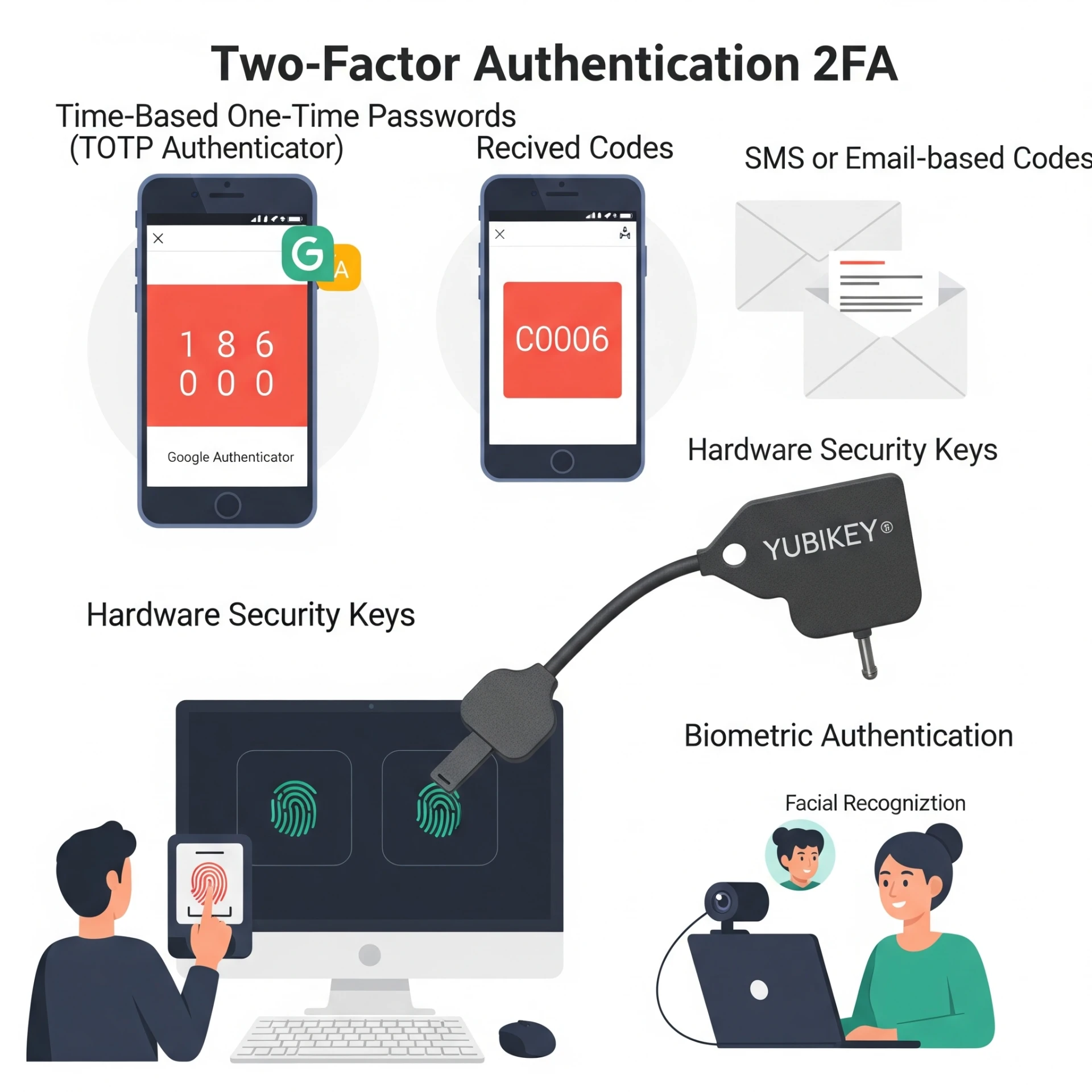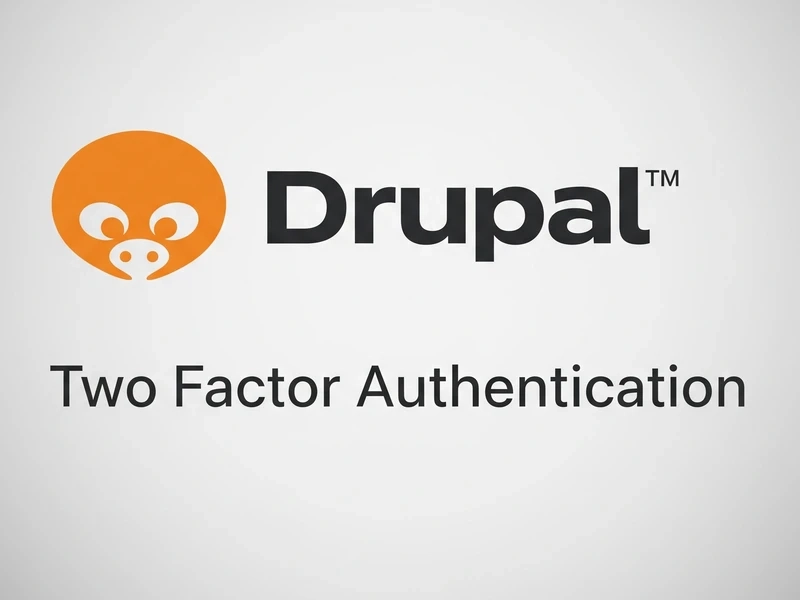In today’s digital landscape, protecting your Drupal website from unauthorized access is no longer optional, it’s essential. Whether you’re running a small blog or managing a government portal, integrating Two-Factor Authentication (TFA) in Drupal is one of the best ways to enhance security. Let’s dive deep into what Drupal TFA is, how to implement it, and why it matters.
What is Drupal?
Drupal is an open-source content management system (CMS) known for its flexibility, scalability, and powerful module ecosystem. It’s widely used by developers and enterprises to build everything from blogs to large-scale government and university websites.
Understanding Two-Factor Authentication (TFA)

Two-Factor Authentication is a security process where users must provide two different types of credentials to access an account, typically a password and a secondary code from a mobile device. This extra layer makes it significantly harder for hackers to gain access, even if they crack your password.
Why is TFA Crucial in Today’s Digital World?
Let’s face it: passwords can be weak or stolen. TFA minimizes the risk by requiring something you know (password) and something you have (mobile device, app, etc.). It’s a simple way to double your security without complicating the user experience.
Security Challenges in Drupal Without TFA
Without TFA, your Drupal site is more vulnerable to brute-force attacks, credential stuffing, and phishing. Admin accounts, in particular, become easy targets. One stolen password could lead to catastrophic consequences, such as data leaks or a complete site takedown.
Benefits of Enabling TFA in Drupal
- Drastically reduces the risk of unauthorized access
- Adds an extra layer of protection for admin and high-level accounts
- Builds trust with users and stakeholders
- Complies with modern security standards and regulations
Requirements to Enable TFA
Before diving into the TFA setup, you’ll need:
- Drupal 8 or later (Drupal 10 recommended)
- Admin access to the Drupal dashboard
- Composer (for module installation)
- Basic knowledge of how modules work in Drupal
Recommended Modules for TFA in Drupal
TFA Module
This is the core module that enables two-factor functionality. It supports multiple second-factor plugins like email verification, SMS, and authenticator apps.
Google Authenticator Integration
This plugin allows you to use apps like Google Authenticator or Authy to generate time-based codes. It’s fast, easy, and doesn’t require an internet connection.
Backup and Recovery Modules
Modules like Backup and Migrate, or integrating with email/SMS fallback options, are essential for users who might lose access to their devices.
Step-by-Step Guide to Installing the TFA Modu
1. Use Composer to Install TFA:
composer require drupal/tfa
2. Enable the Module:
Go to Extend > Search for “TFA” > Check the box > Click “Install”
3. Configure Settings:
Navigate to Configuration > People > TFA settings
4. Choose Authentication Plugin:
Select plugins like Time-Based OTP (TOTP) or Yubikey
5. Assign Roles:
Choose whether to enforce TFA for admins, editors, or all users
Configuring Authentication Methods

Drupal TFA allows flexible authentication types:
- TOTP (Time-based One-Time Password)
- SMS OTPs
- Email OTPs
- Yubikey (USB security keys)
Each has pros and cons, but TOTP is a great default for most sites.
Setting Up Google Authenticator with Drupal TFA
- Enable TOTP in your TFA settings
- Scan the QR code with Google Authenticator
- Save the backup codes (very important!)
- Enter the generated code to confirm setup
- TFA will now be required at the next login
Role-Based TFA Access
Not every user needs TFA. With role-based access, you can enforce TFA only for:
- Admins and content creators
- Users with sensitive permissions
- External collaborators
This keeps friction low while keeping your core assets safe.
Enforcing TFA for Admin Users Only
Let’s say you want only your admin team to use TFA. Simply:
- Go to the TFA configuration
- Under “User Roles”, select “Administrator”
- Save changes
Now, regular users won’t see the TFA prompt.
Using TFA with Single Sign-On (SSO)
If your organization uses SSO (like Azure AD or Okta), you can still use TFA as an extra verification step. Some modules integrate both systems, ensuring your logins are airtight.
Lost Access to Second Factor?
This is where backup methods shine. Always enable:
- Backup codes
- Email-based reset
- Admin override
Document this process clearly for your team to avoid lockouts.
Sync Issues with Authenticator Apps
If the codes don’t work:
- Check your device’s time settings (must be auto-synced)
- Rescan the QR code and rebind the account
- Reinstall the app if needed
Module Conflicts and Debugging Tips
- Clear Drupal cache after installing TFA
- Check for JS conflicts in the login form
- Use the Drupal logs to investigate issues
Educating Users
TFA can be confusing. Provide:
- Onboarding guides
- Email tutorials
- Tooltips on login screens
A little education goes a long way in adoption.
Creating Secure Recovery Options
Backup codes are your safety net. Encourage users to:
- Save them offline
- Avoid storing them on cloud services
- Keep multiple options (email, SMS) enabled if possible
Regularly Updating Modules
TFA modules get frequent updates. Stay safe by:
- Monitoring Drupal.org for updates
- Running weekly
composer updatechecks - Reviewing the changelog for breaking changes
Case Studies and Real-World Applications
Universities Using Drupal TFA
Many global universities like MIT and Oxford use Drupal with enforced TFA for student portals, staff access, and online course platforms.
E-commerce Sites and Secure User Logins
Online shops built on Drupal Commerce often integrate TFA to secure both user accounts and admin panels from fraud.
Government Websites
Drupal powers many government websites worldwide. TFA helps ensure that only authorized personnel can access and modify sensitive content.
Future of Authentication in Drupal
Passwordless Login Systems
Drupal is exploring WebAuthn and passwordless options that use device credentials instead of passwords.
Biometrics and Hardware Keys
Expect tighter integration with fingerprint scanners, facial recognition, and physical keys like YubiKey.
AI in Authentication
Artificial Intelligence may soon predict and prevent unauthorized logins in real-time using behavioral analysis.
Conclusion
Adding TFA to your Drupal site isn’t just a good idea, it’s a necessity. With flexible options, powerful modules, and a supportive community, enabling TFA can be done in under an hour, but could save you from massive security headaches. Whether you’re running a personal site or an enterprise-level portal, don’t wait — secure your logins now.
FAQs
1. What is the TFA module in Drupal?
It’s a security module that enables two-factor authentication via different methods like OTPs, authenticator apps, and security keys.
2. Can I enforce TFA for certain user roles?
Yes, you can apply TFA selectively based on user roles like admin, editor, or custom groups.
3. What if a user loses access to their device?
You can use backup codes, email recovery, or admin override to regain access safely.
4. Is Google Authenticator the only option?
Nope! You can use Authy, Microsoft Authenticator, or even SMS and email as alternatives.
5. Is TFA mandatory for Drupal websites?
Not technically, but it’s strongly recommended for any site handling user data or sensitive content.


